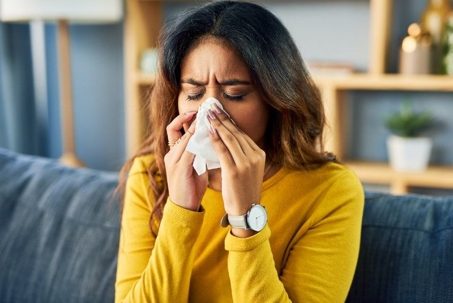Your home is the place where you spend most of your time. Poor outdoor air quality is one of the reasons people spend their time inside, whether it’s pollution or high pollen counts. What you may not realize is that there are seven threats to your home’s indoor air quality in Norfolk, VA.
1. Asbestos
For a long time, people used asbestos as a fire-retardant construction material and as insulation. However, the EPA and CPSC banned asbestos that’s no longer on the market from returning to commerce, but the United States has not banned the use of asbestos.
Asbestos is dangerous as it breaks down into microscopic fibers and become airborne. People then inhale the asbestos, which can cause lung cancer, mesothelioma or even asbestosis. There is no way to tell if there’s asbestos in the air as it doesn’t cause coughing, sneezing or itching.
2. Combustion Gases
Combustion gases from woodstoves, fireplaces, gas stoves, tobacco smoke furnaces and other sources provide additional threats to the indoor air quality of your home. Pollutants from sources such as fireplaces, wood stoves and gas stoves can cause a backdraft into the living spaces of your home, especially if you’ve weatherized your home.
Some common pollutants these sources releases are carbon monoxide, nitrogen dioxide, particles and acid aerosols. Carbon monoxide is a colorless and odorless gas that affects your body’s ability to process oxygen. Nitrogen oxide has an irritating odor that’s reddish-brown, and it causes shortness of breath and irritation of the eyes, nose and throat.
3. Lead
In 1991, the Secretary of the Department of Health and Human Services called lead the number one environmental threat to the health of children in the United States. You can come into contact with lead through the air, your drinking water, dust, old lead paint and through dinnerware that contains lead.
Another way you come into contact with lead is through contaminated soil. This is why it’s recommended to have mats by all exterior doors and not wear shoes within the home.
4. Spores and Pathogens
Spores linger in the air of your home and grow on any surface that has enough moisture for them to become established. Inhaling spores causes hay fever symptoms, rashes, runny noses and sneezing. There’s also a condition called spore poisoning, which causes headaches, mood changes and memory loss.
5. Pesticides
Contrary to what most people believe, 80% of people’s exposure to pesticides occurs inside. According to the CPSC, there may be up to a dozen pesticides in the indoor air of homes.
These pesticides can cause acute or chronic health issues in both exposed pets and people. To minimize pesticide exposure, wash fruits and vegetables before cooking and eating, keep pesticides in a shed or garage and keep disinfectants in a separate area.
6. Radon
Radon is an odorless, colorless, radioactive gas that’s produced when uranium breaks down in the soil and rocks. Radon then enters the home through cracks in walls, floors and floor drains, which then builds up in the home when there’s poor ventilation.
Radon is the number one cause of lung cancer among non-smokers and leads to 14,000 deaths in the United States per year. There are radon detectors you can install in your home to detect radon levels, while home ventilators and opening windows help disperse radon gas.
7. Volatile Organic Compounds
Volatile Organic Compounds, or VOCs, originate from household cleaning products, such as air fresheners, detergents, paints, varnishes and aerosol sprays. Exposure symptoms include irritation of the throat, nose and eyes, but it also causes cancer, neurological damage, kidney damage and liver damage. To minimize your exposure to volatile organic compounds, replace solvent-based paints with water-based paints, and avoid using aerosol products that contain VOCs.
Good indoor air quality is important for the health of you and your loved ones. Our dedicated technicians provide quality solutions to keep the air in your home clean and safe. Contact Climatemakers today and ask about our indoor air quality products, ranging from whole-house ventilators to air purifiers.
Image provided by iStock

